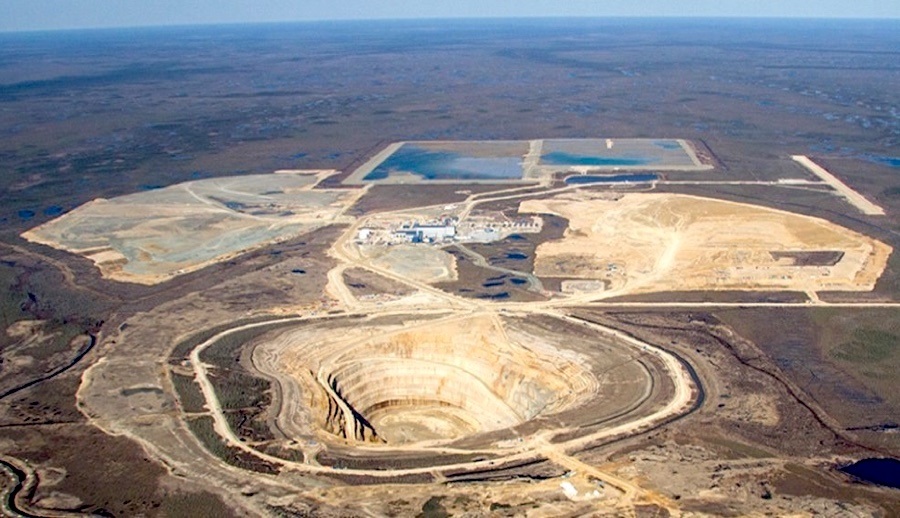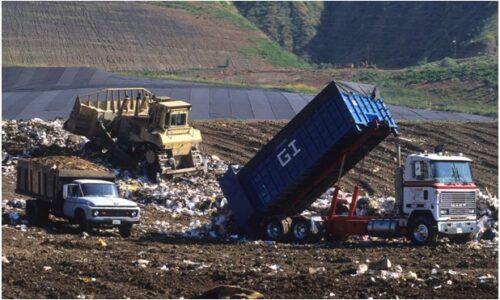With the economy development, the demand for mineral products has increased substantially, as well as the scope of mining development. The large volume of tailings accumulated has caused many problems for the mining, environment, and economy, especially for the living environment of residents.
Tailings are not only dangerous but also cause huge pollution to the ecological environment.

- Tailings bank is a source of danger
The tailings bank is a danger source for human-made mud-rock flow with high potential energy. The tailings have been damaged into particles during the beneficiation process, which is easy to collapse and flow, causing vegetation damage and injury, collapse and landslides happened easily, especially in the rainy season. The tailings bank damaged will cause serious loss to the lives and property of the downstream residents.
- Tailings heap occupy a lot of lands
In previous years, most of the tailings are heaped in the ground, regardless of whether the useful minerals in the tailings have recovery value. The accumulation of tailings not only occupies a large number of arable land but also easily lead to environmental pollution, soil erosion, vegetation damage and so on. - Tailings influence agriculture and fishery.
The tailings and residual mineral processing chemicals damage the farmland environment seriously, after flowing into cultivated land, the crops will be polluted or destroyed; The tailings discharge into streams and lakes poison not only aquatic life but also causes other hazards, sometimes involving long stretches of the river. - Air pollution caused by fugitive dust from tailings bank
Because the fine tailings particles are piled up in the open air, it’s easy to raise dust after drying, especially in dry areas. A large amount of tailings dust covers the good farmland if encountering gale weather, easy to form the black sand storm and fly to the area around the tailings bank, causing soil pollution, land degradation and even making the around residents become sick. - Tailings pollute the groundwater
On the one hand, the dissolved heavy metals seep into the underlying soil. On the other hand, through surface runoff into the lower reaches of the hydrological system or infiltration into the groundwater, surface water and groundwater will be linked, resulting in the entire mining area even the river basin pollution
Environmental friendly tailings treatment technology – dry stacking
The large volume of tailings has become an important factor that restricts the sustainable development of the mining industry and endangers the ecological environment of the mining area and its surrounding areas.
Dry stacking is a new tailings disposal technology which is rising in recent years, it refers to the tailings slurry after multistage concentration, and then through the dehydration vibrating screen and other high-efficiency dewatering equipment, make into a low moisture content of the material and then transported to the tailings bank for storage or recycling.
The main process flow of dry tailings discharge is as follows: preliminary dewatering of tailings in dehydration system – flocculation settling of thickener – secondary dewatering of slurry – filter pressing – conveying and discharge the processed dry tailings to the tailings bank.
Because of its compact structure, small footprint, flexible operation, large processing capacity, continuous work, low moisture content of filter cake, good filtration result, the belt filter press plays an irreplaceable role in the filter pressing process during tailings dry treatment. The belt filter cloth as the heart of the filter press should be chosen by professional and expert technicist according to the specific conditions.
After treatment, the dry tailings are discharged in the valley or flat land which is close to the mine and has little impact on the environment.
Benefits of tailings dry stacking
The dry tailings stacking is of great significance in safety and environmental protection. Through the comparison of the characteristics between the dry tailings stacking and the traditional wet discharge, the dry tailings stacking have many advantages.
- The tailings after dry stacking can be filled in the goaf to eliminate the sink danger, has good seismic safety; Saved the funds of environmental treatment, protect the geological environment, increase the storage capacity of the tailings reservoir; Prolong the service life of the tailings bank, and enhance the margin.
- No seeper in the tailings bank, eliminate the dangerous and groundwater pollution problems fundamentally. The tailings will not flow for a long distance when the dam breaks, no debris flow will occur.
- The tailings water recycling rate will be increased from 60% -75% to more than 90%, and enhance the utilization ratio of the recycle-water. At the same time, no wastewater discharge, reduce water pollution.
- The filtrate of the pressure filtration of the tailings will be reused, which makes possible to the recovery of the metal contained in the wastewater from the tailings. Besides, the chemicals in the wastewater be recycled, which reduces the consumption of chemicals, and obtain a green environmental protection mine system.
Tailings dry stacking is a great benefits process for residents’ safety, ecological environment and economic benefits. It should be applied to more and more mines worldwide.

